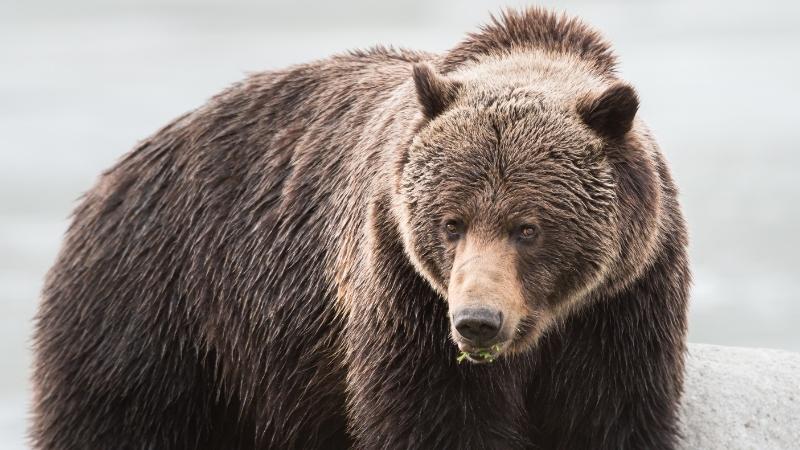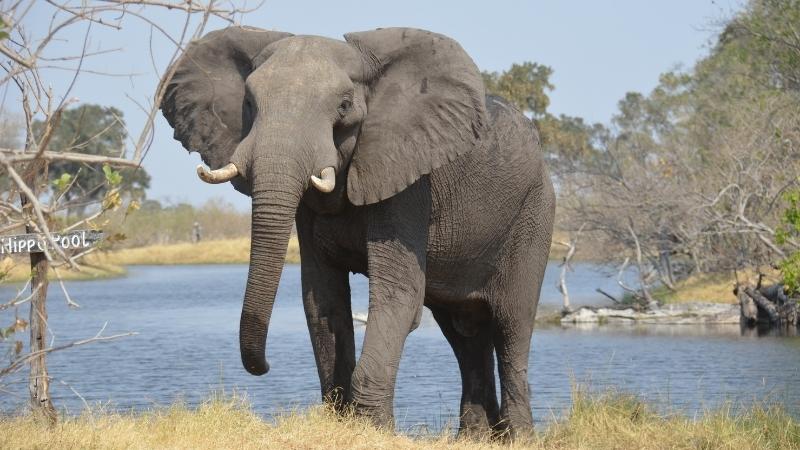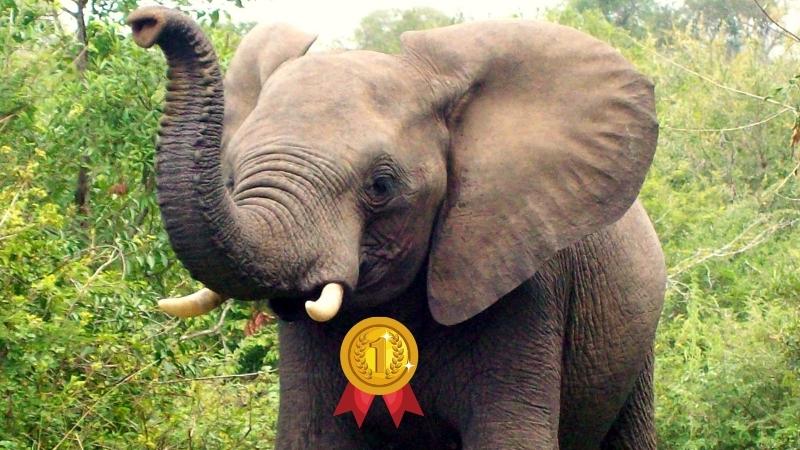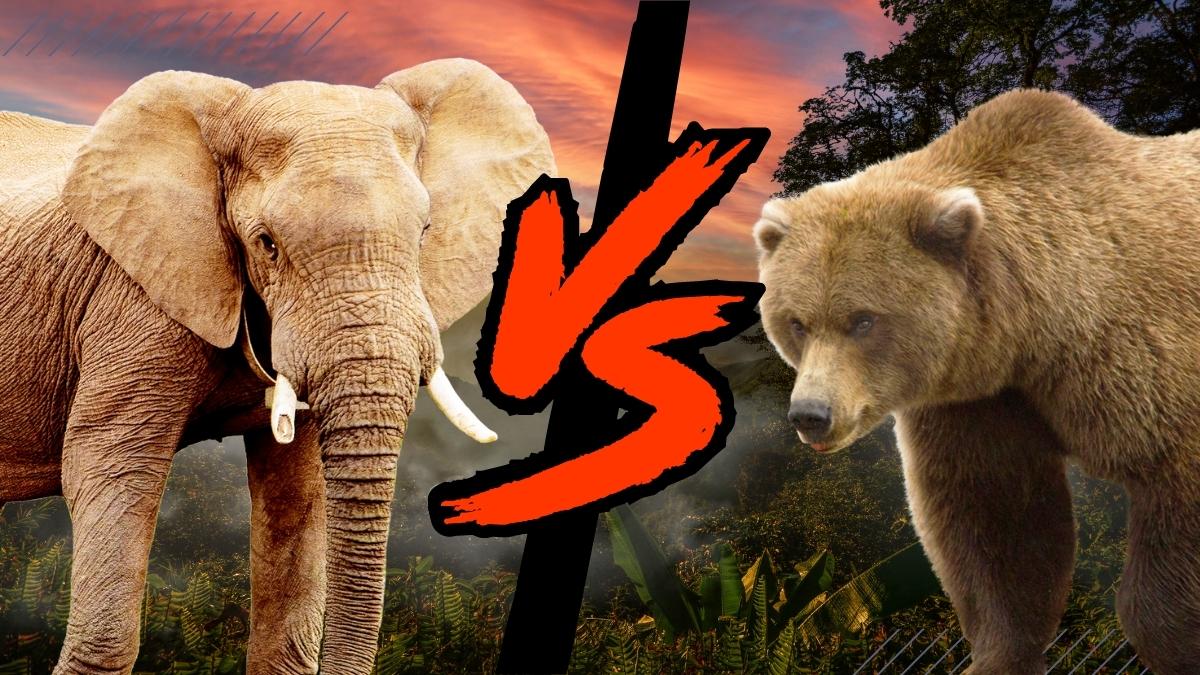Humans have always taken great pleasure in contrasting the physical prowess and potential outcomes of combat between various animal species. Grizzly bear vs. elephant is one such instance.
Who is more ruthless, stronger, and would prevail in a fight? Before we begin, it is important to emphasize that because bears and elephants inhabit distinct habitats, this combat is solely based on physical traits.
Find out who would prevail if an elephant and a bear engaged in combat.
Strength of Grizzly Bear

Grizzly bears are a large and threatening subspecies of brown bears. They are frequently depicted as hostile animals and live in North America’s Pacific Northwest. Due to their omnivorous nature, they rarely attack unless provoked, starving, or perceived as a threat. Strengths of Grizzly Bears include:
Average Grizzly Bear Strength
- Since grizzly bears cannot be forced to perform bench presses or squats, their specific strength cannot be ascertained. They do, however, exhibit other forms of strength.
- A typical-sized female grizzly bear (sow) can readily raise a 350-pound rock in order to look under it for food.
- In an experiment, food was stored inside 700-pound trash that was then closed and left in a grizzly bear’s den. The fragrance of food attracted the bear, and he moved the dumpster with the ease of a portable bookshelf.
- They are able to lift a weight that is 0.8 times their own body weight, according to estimates.
Grizzly Bear Force
- A fully grown adult grizzly bear has the strength to lift about 500 kg of weight or 0.8 times its own body weight.
- It can lift rocks weighing more than 300 kg with just one paw.
- One grizzly was seen pulling a mature moose that weighed an average of 800 lbs by itself.
Grizzly Bear Paw Strength
- The paws of grizzly bears are exceptionally robust and capable.
- With one paw, they can lift rocks weighing more than 300 kg.
- Their paws have around 4-inch-long claws that they may utilize for quick burrow digging and combat with other animals.
- A single strike from their paw can break a wolf’s spine.
Strength of Grizzly Bear Swipe
- A grizzly bear’s swipe is so powerful that it can kill other creatures with only one swing.
- Their single swipe has enough force to knock someone’s head off.
- They only need to swipe at the rear of a cougar or wolf to break their spine.
Grizzly Bear Arm Strength
- The strongest parts of any predator are thought to be the arms or forelegs of a grizzly bear.
- They can move huge rocks and other objects because of their powerful arms, which are powered by enormous shoulder muscles (which give them a noticeable hump on their back).
- A grizzly bear’s single slap can snap a person’s head off and break the spine of a wolf or cougar.
Grizzly Bear Jaw Strength
- Grizzly bear jaws are incredibly strong and have robust muscles.
- They have jaws that can close with 1,200 PSI of force, which is strong enough to bite through hard objects like cast iron kitchenware and bones.
- A grizzly bear’s bite is so powerful that it may break a person’s skull.
- Their 1,200 PSI (pound per square inch) biting force is sufficient to snap the spine of large prey, such as an adult male elk, as well as to crush a bowling ball.
Strengths of an Elephant

The world’s largest terrestrial mammal is the elephant. They are distinguished by their enormous bodies, protruding ears, and broad trunks. These herbivores are peaceful animals that hardly ever act violently. This does not imply that they are helpless, though. In actuality, the opposite is true.
Elephant Strength
- Their size, rather than ecological adaptability, is the primary cause of most of their strength.
- Elephants can crush the majority of other creatures with their size alone due to their height of over 13 feet and weight of 14,000 pounds (7 tons) or more.
- They possess extraordinary bodily strength and can carry more than 2,100 pounds—or 15 percent of their body weight—on their backs without suffering appreciable consequences on their musculoskeletal function.
Elephant Bite
- Elephant bite forces are quite high, coming in at about 2,175 PSI. This is around three times stronger than a lion’s bite and more powerful than a jaguar’s bite.
Elephants Trunk
- Elephants can lift roughly 770 pounds with their trunks.
- The many muscles in their trunks enable them to act in this manner. In actuality, the appendages of elephants have around 40,000 muscles.
- The trunk of an elephant weighs roughly 400 pounds. When combined with lifting strength, a human might be easily killed by an elephant with just a swipe of the trunk.
- A running elephant with its trunk swinging can generate a force of around 6,000 lb.-ft./s. This force is equivalent to a lesser lion’s swipe force. If the animal moves, the swipe force will also increase.
Elephants Tusk
- Tusks from an elephant can withstand a force applied of 14,067 PSI.
- Elephant tusks have a maximum length of 137 inches, which is amazing.
- The elephant uses its trunks to fend off predators.
Why an Elephant Would Defeat a Grizzly Bear

Even if there are few situations in which a grizzly bear would win a fight with an elephant, the elephant is usually the more likely victor.
Even the heaviest bear is about three times lighter and half the size of an elephant. A bear would not have a chance against an elephant due to its huge size and power.
Elephants have a variety of responses to danger and measures to protect themselves. The most frequent technique is racing toward the threat and breaking off before reaching the target, known as a mock charge.
Elephants have a variety of responses to danger and measures to protect themselves. The most frequent technique is racing toward the threat and breaking off before reaching the target, known as a mock charge.
Elephants also benefit from the advantages of group security and remaining together. No bear will ever want to fight an elephant, whether an adult elephant or a youngster because it will undoubtedly lose.
Why a Grizzly Bear and an Elephant will Never Fight
Even though it will be interesting to see an elephant and a grizzly bear fight each other, it is quite impossible. This is due to the distinct ecosystems that bears and elephants inhabit.
Elephants live in the grasslands and forests of the southern hemisphere, while bears are naturally located in the northern hemisphere. The likelihood of the two meetings is low. Even so, a fight between an elephant and a grizzly bear would be one to remember.

